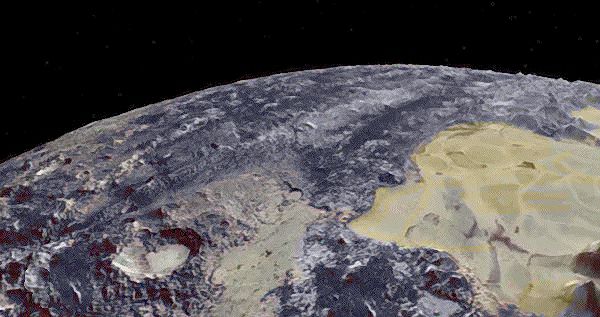RESEARCHERS DISCOVER PLUTOIS COVERED WITH DUNES |
|
|
It is about -230 degrees and is the farthest dwarf planet in the solar system. You may have guessed it, it's about Pluto. And we now know more about the surface of this planet. According to snapshots taken by the New Horizons spacecraft, which flew over Pluto in 2015, it would be covered with dunes of methane ice. "The probable source of the dune's grains is the methane ice carried by the winds from the mountains," the scientists explain in an article published Thursday in the journal Science. "But we can not exclude that it is nitrogen ice." Surprising discovery insofar as the atmospheric pressure at the surface of Pluto is 100,000 times lower than that of the Earth. As a result, astronomers thought that it was too weak for winds to form. "The probable source of the dune's grain is the methane ice carried by the winds from the mountains," scientists say in an article published Thursday (May 31st) in the journal Science. The winds would blow at an approximate speed of 30 to 40 km / h. Weak winds, but so is gravity. The dunes themselves are spread over an area about 7 km long. Besides Pluto, it was already known that Mars, Venus or Saturn's great moon, Titan, had dunes, says lead author Matt Telfer, a professor at the University of Plymouth (United Kingdom). "We knew that everything in the solar system with an atmosphere and a solid surface had dunes, but we did not know what we would find on Pluto." The dunes are probably young, geologically. They would have formed in the last 500,000 years. "But it turns out that Pluto, while being 30 times farther away from the sun than the Earth, has similar characteristics to Earth's," according to the scientist. |
|
| Paul Emison for DayNewsWorld | |
 |
|




